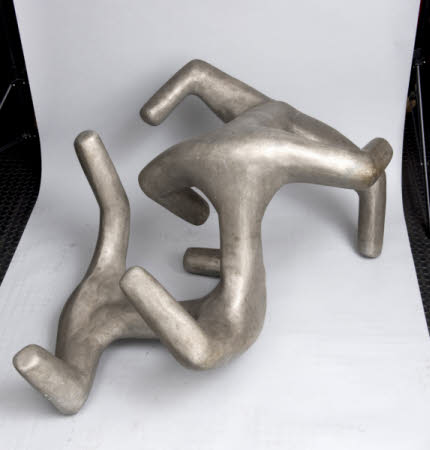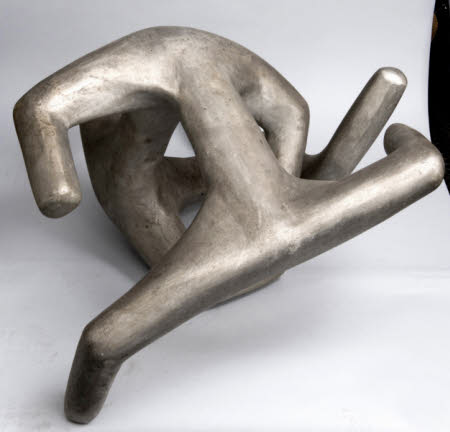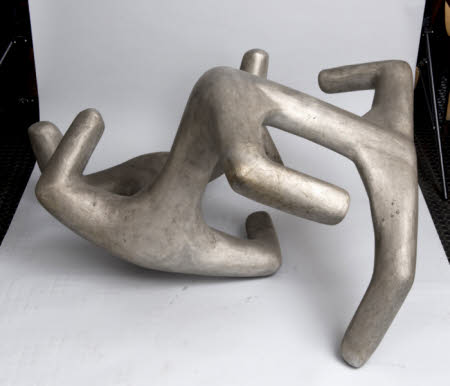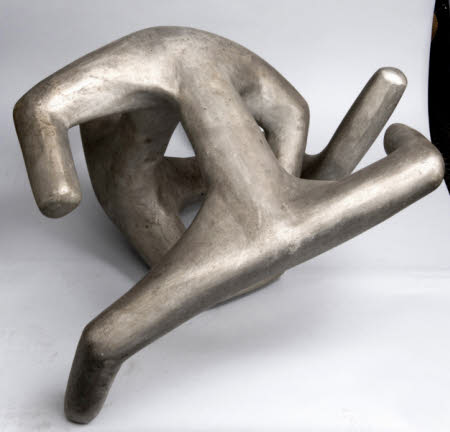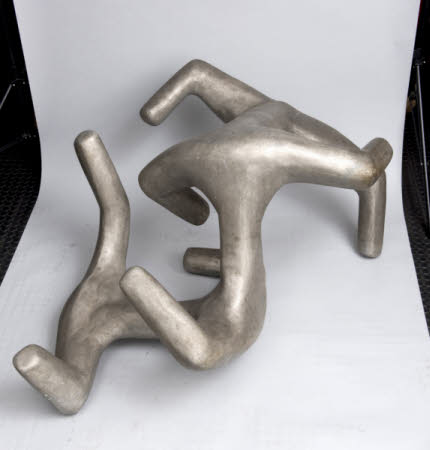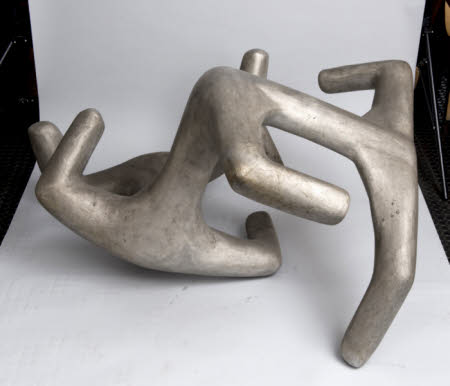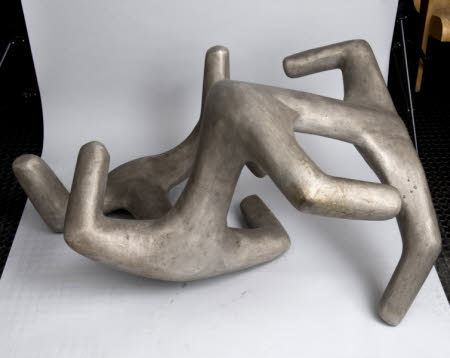Untitled [Suspended Figure]
Helen Phillips (Fresno 1913 - New York City 1995)
Category
Art / Sculpture
Date
circa 1956
Materials
Aluminium
Measurements
650 x 900 x 1200 mm
Place of origin
Paris
Order this imageCollection
2 Willow Road, London
NT 112303
Summary
Untitled aluminium sculpture in the form of stylised interlocking limbs by Helen Phillips (1913-1995). An aluminium cast of the balsa wood sculpture made by Helen Phillips for the seminal exhibition This is Tomorrow, held at the Whitechapel Gallery in 1956.
Full description
Ernö Goldfinger worked alongside the American sculptor Helen Phillips during the Second World War, when he sublet his offices to the Industrial Camouflage Unit, set up to produce camouflage designs for factories. Goldfinger was technical advisor to the Unit, which consisted of leading figures in the English Surrealist Group, including Phillips’s husband S.W. Hayter (1901-1988), and Phillips herself. After the War Phillips moved with Hayter to Paris, but she contributed to the celebrated 1956 exhibition at the London Whitechapel Gallery This is Tomorrow. Phillips’s contribution was a sculpture in balsa wood which was assembled and finished at 2 Willow Road. Goldfinger noted in a letter of 17 July 1956 to Victor Pasmore that ‘Helen Phillips stayed with me for some 10 days and finished her piece of sculpture at my house. It is in “Balsa” wood and I think rather good […] She made a most hellish dust over the whole house when sandpapering it; everything is covered with a thin layer of “Balsa” dust!’. In an earlier letter of 16 May 1956 to Goldfinger, Phillips discussed the making of her sculpture and its meaning: ‘Much of my sculpture is based on this formula which is a series of limbs attached to a spine – the limbs fold or expand and the spine twists – often like the fingers on a hand opening up.’ Helen Phillips, Ernö Goldfinger and the abstract painter Victor Pasmore collaborated on one section of This is Tomorrow. One report explained that ‘Each artist contributed an example of his own art, all of them designed to be mutually sympathetic, the one heightening the effect of the other. It is the architect’s role to provide a setting for the painting and the sculpture. In this particular instance the setting consisted of free standing planes at right angles to each other, related dimensionally: the paintings which were composed of black and white wood strips and of perspex, and the sculpture, which was made of balsa wood, were both “abstract”. (Architecture and Building, September 1956, p. 330). The sculpture now at 2 Willow Road is a replica in aluminium of the balsa wood sculpture shown in This is Tomorrow; it was made by Helen Phillips as a gift to Ernö Goldfinger, following the success of the exhibition. Jeremy Warren, 2018
Provenance
Acquired by Ernö Goldfinger as a gift from the artist in 1956. Bequeathed to the National Trust by Ernö Goldfinger (1902-1987) and Ursula Ruth Blackwell, Mrs Ernö Goldfinger (1909 - 1991), formally acquired in 1994.
Credit line
2 Willow Road, The Ernö Goldfinger Collection (National Trust)
Makers and roles
Helen Phillips (Fresno 1913 - New York City 1995), sculptor

